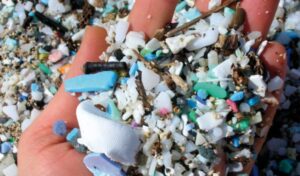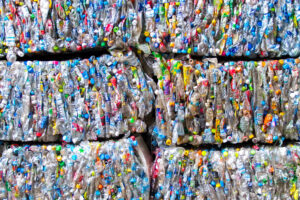- Regulatory Tools
- Circular Economy
- Government
- Government Policy
- Labelling
- Recycling
- Policy
- Strategy and Policy
- Take Action
- National
Cape Breton researcher upcycling snow crab to reduce carbon footprint
Right now, one third of every snow crab caught ends up in the compost or landfill.
Snow crab is one of the most lucrative and growing industries in Cape Breton, with six fisheries on the island.
“They fish crabs four months of the year, and during those four months what they process is the full snow crab but they only are able to sell for product the shoulders and the legs,” says Stephanie MacQuarrie, researcher and chemist at Cape Breton University.
Last year, MacQuarrie and her undergraduate students began researching other uses for the unused portion of the animal.
“The rest of the snow crab, which is a pretty significant piece of the mass of the crab, about one third of the mass, is considered waste,” she tells NEWS 95.7’s The Todd Veinotte Show.
For the research, CBU partnered with Louisbourg Seafoods, the largest of the six crab fisheries on the island, and therefore the one with the most waste.
“There’s about three transport trucks worth of waste that leaves the site every day,” MacQuarrie says.
In the past, the waste has been shipped off and sent to Guysborough County to be composted. But MacQuarrie wanted to find a better way to deal with the by-product.
“You can imagine that’s a pretty significant fossil fuel footprint considering that it has to be shipped by transport truck and you’re shipping a large amount of water a pretty significant distance,” she explains.
The researcher received $200,000 from the Natural Sciences and Engineering Research Council of Canada, and began looking at the chemical composition of the waste, which was full of calcium carbonate.
“We thought about some potential projects based on the chemical composition of the waste that we were receiving,” explains MacQuarrie. “Calcium carbonate is one of the products that is often used in the concrete and cement industry, so we thought that would be a good place to start.”
So CBU partnered up with local company Quality Concrete, and looking at ways to turn the crab bodies into either bio oils, bio char, or charcoal.
“We showed some preliminary results that indicated that the addition of the crab char to the cement concrete mixture would be beneficial,” says MacQuarrie.
The researchers soon began looking at the agriculture industry, and found that crab charcoal could also be used in fertilizer.
“We looked at whether addition of crab char to soil would have beneficial outcomes for growing things like strawberries and barley plants,” MacQuarrie says.
The team in the lab has been largely made up of undergraduate students, who MacQuarrie says are extremely dedicated.
“They get really excited when they can see applications come from their work. I think it drives them. It makes them work hard, they show passion about the research that’s coming out of their results.” she says.
MacQuarrie says that she’s happy to be doing research that addresses a local problem in Cape Breton.
“We’re looking at taking a current problem that one of our local industries suffers from and solving that problem for them,” she explains. “But also potentially solving problems for other industries or helping them increase their value and reduce their costs locally as well.”
Before the New Year, MacQuarrie says all six crab fisheries on the island will meet to discuss a new way to deal with the waste. She expects it to take another year or two for the industry to fully transition.



